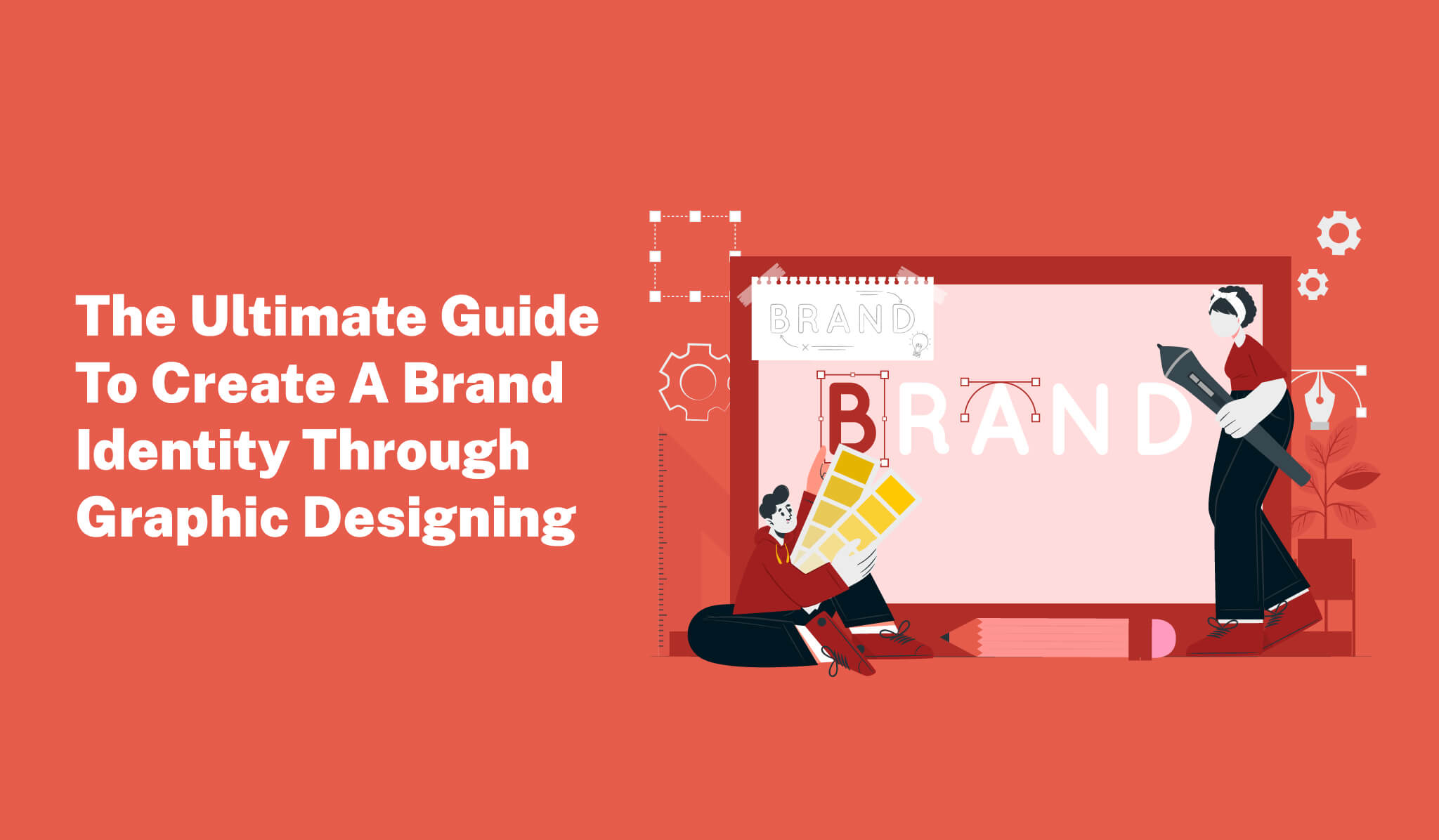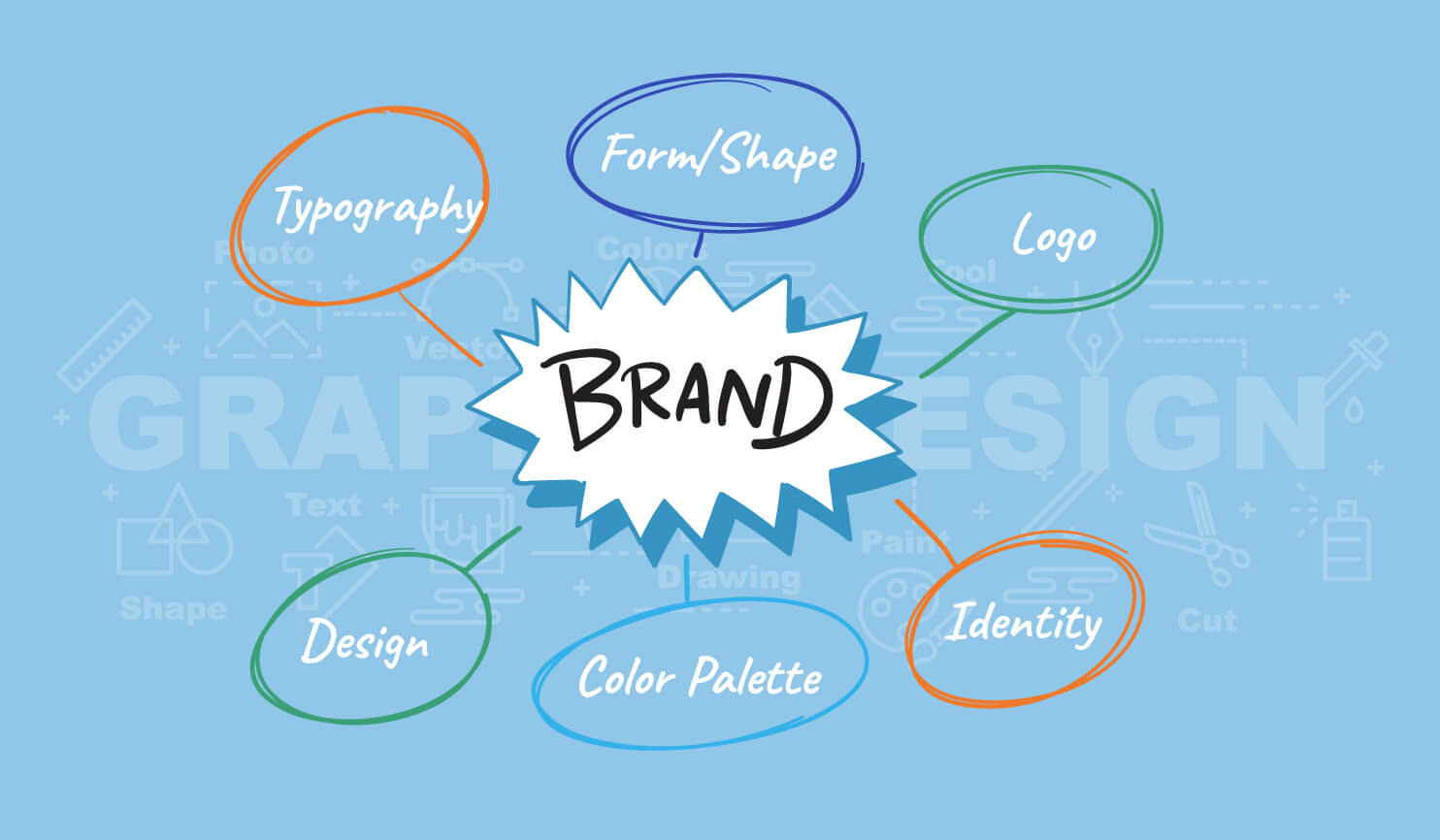
The Ultimate Guide To Create A
Brand Identity Through Graphic Designing
Are you interested in updating the brand identification of your business? You've come to the perfect place if you need to refresh your marketing materials' general appearance and feel and your logo.
While developing a brand identity can be enjoyable, it can also be quite perplexing. To ensure a project's success, it's crucial to comprehend a number of key branding terminology. Don't worry if you have any questions. We are available to guide you through each step.
Design and branding are crucial components of marketing and business expansion. Straightforward and consistent branding ensures clear communications between your business and your current (and potential) clients.
We'll go over how we work with clients, how we provide value to the branding process specifically, and some examples of how we've helped launch new brands or give established businesses a modern makeover in this piece.
Branding: What is it?
The process of building a brand involves numerous steps and components. Some may describe it as a hybrid of science and art. The complete branding process includes a variety of elements, including strategy, messaging, story, product development, placement, promises, positioning, and much more, when viewed from a thirty thousand foot perspective.
What makes you instantly recognisable to your customers is your brand identity. The connection between you and your customers, the development of customer loyalty, and the way in which your customers will view your brand are all shaped by the brand identity that your audience will associate with your good or service.
Brand Identity: What Is It?
The totality of the components that make up a company's public image is its brand identity. This covers the hues, symbols, typefaces, and graphic designs used to represent a business or institution. Slogans and taglines are other examples of it. In order to establish an emotional connection with customers, your brand identity needs to be distinctive and identifiable.
When the difficult process of branding is finished, you need a graphic designer with experience in brand design to create a look and feel that specifically and memorably reflects the spirit of your company. The majority of firms will work with a creative design firm to actualize the brand's meaning and messages.

Create A Powerful Brand Identity
Design: Where Does It Fit Into Branding?
Your design will create the brand identification of your business, much as how Adidas helped to create the image of the star athlete you were in middle school.
Your corporate design assets are the observable components that will impact how people view your brand. Things like your company's logo, packaging, website design, social media visuals, business cards, and employee uniforms.
In other words, having a successful company that accurately represents your brand requires nailing your design and brand identity.
So how exactly can you master your design and create a brand identity that will propel your company forward?
You must start from scratch and establish the fundamentals of your design structure—the cornerstones of your brand identity—before you begin producing your design assets.
The following are the foundational elements you should decide before producing your design assets:
-
1. Typography
You guessed it the typeface (or type) you select for your branding materials is referred to as typography. It's especially crucial to make informed decisions when selecting brand and logo fonts.
Choose your typefaces carefully because they will say a lot about your brand.
-
2. Color Palette
Following is colour. People—including your potential customers—have psychological connections to various colours, and strategically using branding colours and logo colours can significantly affect how your audience perceives your company.
The following are some things that the rainbow's colours (plus a few additional) can accomplish to support your brand identity:
- Red :The colour red represents fervour and energy. If your brand identity is loud, vibrant, and young, this is the best option.
- Orange : Orange is a high-energy colour that is perfect for conveying friendliness and playfulness. Because it's less frequently used than red, it will also help you stand out.
- Yellow : The colour of sunshine, yellow, is all about joy. It's an excellent option because of the upbeat atmosphere if you want to feel lively, approachable, and inexpensive.
- Green : Green is a remarkably adaptable hue that can be utilised for almost any brand. However, when people see green, they typically associate it with either money or the natural world. Green is a particularly wise choice if either of those elements represent your brand.
- Blue : Blue is the most widely liked colour in the colour wheel and can make your branding seem more reliable and trustworthy. Use blue if you want to appeal to a broad demographic and win their trust in the process.
- Purple : Purple is a safe pick if you're striving for an opulent vibe in your branding because it is the colour of royalty.
- Pink : Whether intentionally or not, pink is regarded as being feminine and should thus be a strong contender for your brand's hue if it caters to women. It works well for brands that have a soft or opulent personality.
- Brown : Brown is possibly the least used colour in branding overall, but that might be to your favour! Any time you take an unconventional approach, it makes you stand out. Additionally, brown can make customers perceive your brand as tough or macho.
- Black : There is nothing more timeless and powerful as this colour if you want to be perceived as modern or smart as black.
-
3. Form/Shape
You should consider form and shape when creating your ideas. A logo that is all circles and soft edges will elicit completely different responses than one that is sharp and square, for example, but this subtle but effective aspect can be leveraged to reinforce the emotion you want from your clients.
Here are some examples of how various forms can sculpt your brand's identity:
- Circles, ovals, and ellipses are examples of round forms that are all about the fuzzy feelings. Brands that use round shapes can foster feelings of love, community, and unity. Additionally, the rounded edges can be seen as feminine.
- People tend to associate strength and efficiency with straight-edged shapes like squares, rectangles, and triangles. The straightforward lines convey stability and dependability, but you must be careful because if the shapes aren't offset by something lively, like vibrant colours, they may come across as impersonal and fail to engage your target audience.
- Straight lines also have meanings of their own. Vertical lines imply masculinity and strength, while horizontal lines imply peace and harmony.
Logo Design
It's critical to realise that developing a logo is a step in developing a brand identity. A logo by itself does not constitute a brand, but because it becomes associated with your brand name, it is typically the most significant component of the visual identity portfolio.
Any shape or style of logo is acceptable, but how well it communicates your company's message is crucial to its success. The most widely used logos typically have straightforward, recognisable designs. Additionally, logos may include graphics, icons, or symbols that stand in for particular facets of your company.
How About Videos?
Of course, logos, fonts, and colour schemes are among the first things that people think of when they think about branding, but they are merely the beginning. Everything you present to your audience should adhere to the criteria for your brand that have been established within the context of your brand identity.
Photography, social media graphics, films, email marketing, newsletters, live events, and other mediums must all adhere to your visual brand identity.
This is why we stress using a creative design studio rather than attempting to create your visual brand on your own (or rely solely on freelancers). A qualified team can give you advice on every consideration that must be made for all marketing materials that are intended for an audience.